- News
- Reviews
- Bikes
- Accessories
- Accessories - misc
- Computer mounts
- Bags
- Bar ends
- Bike bags & cases
- Bottle cages
- Bottles
- Cameras
- Car racks
- Child seats
- Computers
- Glasses
- GPS units
- Helmets
- Lights - front
- Lights - rear
- Lights - sets
- Locks
- Mirrors
- Mudguards
- Racks
- Pumps & CO2 inflators
- Puncture kits
- Reflectives
- Smart watches
- Stands and racks
- Trailers
- Clothing
- Components
- Bar tape & grips
- Bottom brackets
- Brake & gear cables
- Brake & STI levers
- Brake pads & spares
- Brakes
- Cassettes & freewheels
- Chains
- Chainsets & chainrings
- Derailleurs - front
- Derailleurs - rear
- Forks
- Gear levers & shifters
- Groupsets
- Handlebars & extensions
- Headsets
- Hubs
- Inner tubes
- Pedals
- Quick releases & skewers
- Saddles
- Seatposts
- Stems
- Wheels
- Tyres
- Health, fitness and nutrition
- Tools and workshop
- Miscellaneous
- Tubeless valves
- Buyers Guides
- Features
- Forum
- Recommends
- Podcast
feature
Are expensive carbon wheels worth it? Testing deep carbon rims vs classic aluminium
We're often told that "aero is king" and that "wheels are one of the biggest upgrades you can make to your bike". Well, we set out to find out how much faster deep wheels make you before deciding whether deep rims are worth it.
To find out we've taken the fastest wheels from Pt.1 of our wheels testing (recap available below) and pitted them against the new Roval Alpinist SLXs, an aluminium shallow section wheelset designed to be a more cost-conscious upgrade, at £650 they're a whole, £1,900 cheaper than our carbon deep section winner.
> Are expensive carbon road bike wheels worth the money?
If you cast your mind back to last autumn then you’ll remember that deserter Liam and I put a whole host of carbon wheels through their paces to find out if spending more resulted in going faster. SPOILER ALERT: The answer was...kind of...up to a point...
Given the small margins between those wheels, we thought it would be interesting to see how much of a difference deep carbon wheels actually make out on the road when compared to a more traditional aluminium shallow rim.
The Contenders
Aluminium bikes are having a bit of a resurgence at the moment, could we be about to see the same when it comes to wheels? Or does carbon still rule the roost? To find out, we're putting the pinnacle of carbon up against the wheels that claim to be the pinnacle of alloy, place your bets below!
The Roval Rapide CLXs are still my go-to race wheelset thanks to being stable, pretty light and most importantly, fast! But how much difference can a set of super-wheels like these actually make in the real world?
One thing that the Rapide's ain't is cheap! (The current second generation of the wheels have an RRP of £2,550!). Well, now Roval reckons they’ve got the perfect wheelset upgrade for riders on a smaller budget and the 24mm deep aluminium Alpinist SLXs (£650) claim to be “the pinnacle of what can be achieved with alloy”.
> Roval says new Alpinist SLX wheels are “the pinnacle of what can be achieved with alloy”
You'll be able to find our full review of the Alpinist SLX wheelset to independently verify (or squash) those claims up on the site soon but in the meantime, it seemed like the perfect excuse to try and answer the many of you in the comments who asked how much faster carbon deeps really are...Let’s see how much speed you can really buy!
The Tests
> Best road bike wheels 2023 — transform your road bike with some shiny new hoops
We’ll be running three tests, one up a hill, one on the flat and you guessed it one going downhill. Obviously being quite deep, I think we can expect the Rapide wheelset to be quicker on most terrains - but by how much?
Oh and one other interesting thing to note is that despite clearly being quite different in just about every way, the two wheelsets are actually quite a similar weight, 1,485g for the Alpinist SLX and just 20g heavier for the 1505g Roval Rapide CLX II’s.
The rules
> road.cc Recommends Wheels of the Year 2022/23
Obviously, we want to try and make this as fair as possible so without a wind tunnel we’re left having to rely on a nice still day for consistent conditions, my trusty Quarq power meter, the same tyres and tubes and of course the same tyre pressures as well.
Then, to get both the most reliable results possible and because people seem to like watching me suffer, each test was conducted three times on each wheelset to try and weed out any anomalies and get a more reliable average. Oh, and of course I also wore the same clothing and held the same position for each run.
The Results
The Descent
We kicked off with the descending test, which my legs definitely regretted later when having to do back-to-back flat and uphill tests. The descent in question was around 1.2km long and physics tells us that this is technically where we should see the biggest difference in the wheelsets as aero becomes ever more important at higher speeds thanks to the drag force being proportional to the square of the rider's velocity.
As always with real-world tests it is worth noting that there are always going to be factors out of our control, the real world is after all an uncontrolled environment. However, we hope you agree it’s still worth doing these tests as it is where we ride and if we can’t find a difference in a range of conditions then it’s unlikely you'll be able to either.
To make sure that it was in fact the wheels that were the variable and not my bravery, the descent in question had no corners that required braking and on each of the six runs I didn't pedal, kept my legs in the same position and set off from a standing start, again, without pedalling.
As we’d expect, the carbon deeps were indeed faster at descending and whilst that difference might look small, this was of course only a very small descent. If you look at some of the proper mountain descents in Europe then you can quite easily be descending for 20 minutes plus.
On average, the much shallower Alpinist wheels were 1.8 seconds slower over our 1 minute 20 or so descent, that's a difference of around 2.2%. Perhaps more interesting, is the fact that I held an average speed of around 52 kph on each run, so using the data from all the runs I put my aerospace degree and some CDA estimates to good use and calculated that this 1.8-second saving equates to around 16w at 52kph.
Now, I’ll be the first to hold my hand up and pick faults in this test but that figure is in keeping with what wheel brands regularly tell us, While researching this test I’ve read from multiple sources that a set of 50mm deep wheels can save 10w at 40kph so it’s not unreasonable to assume that some of the fastest deeps out there can save you this pretty tidy figure that we've come to.
As an add-on - Yes, saving 16 watts is certainly worth writing home about but we do also know that the vast majority of drag comes from you, not your bike or equipment. Having finished the runs, I made one final attempt no longer holding the same position on the drops and instead did an illegal super tuck, that run took me 1:15 and I had a max speed of 3kph faster, a far bigger difference than swapping out the wheelset!
Flat Test
> Why riders like you need to get more aero and wheel weight doesn't matter
Unless you’re very lucky…or lazy…most of us don’t do rides just downhill, this next test was along an 11km section of road with just a few rollers to test the performance of the wheels on more typical riding terrain. Again, we’d expect the deeps to be faster and here’s what we found…
On the full six attempts I road at a constant 275 watts and managed to average within +/- 1 watt of the target each time. Even so, our results are far from conclusive. On one run for example I was 20 seconds faster with the deeps on and on others only 10. We should therefore take the final figures with a pinch of salt but we can conclude that the deeps were faster on each and every run than when the shallow alloy hoops were fitted which surely cannot be down to pure chance.
On average I was 13 seconds faster on the Rapides, that’s a difference of around 1.2%, again, body position or pushing harder on the small rises is likely to have a far greater impact on time. We found that swapping out the wheels, a change that in this case represents spending an additional £1,900 resulted in a speed advantage of about half a kilometre per hour, whether that’s worth it is up to you to decide.
It’s also worth noting that I completed all the runs solo, if I was able to share turns, draft someone, or even better hide in a bunch then we’re looking at minuscule advantages even smaller than the 10 watts that I predict the deeps saved me.
The Climb
So far, in every test we’ve expected the deeps to be faster and indeed they have been, however, there’s one area that we see pro and amateur riders ditching the deep sections - we are, of course, talking about on climbs.
However, the two wheelsets we have here are more similar in weight than you might expect, whereas usually, you can expect a significant weight penalty by switching to deeper wheels, the Alpinist SLXs weigh in at 1,485g on our scales and at 1505g the Roval Rapide CLX II’s are just 20g heavier.
As the graph below shows, when travelling at slower speeds, rolling resistance makes up a far larger proportion of the forces slowing you down and so as with all the tests, we’ll once again be using the same tyres, latex inner tubes and tyre pressures to ensure that it stays as consistent as possible.
Having ridden up the hill at 275 watts on the deep wheels I switched them out for the shallow aluminium wheels, to be honest, they sounded nowhere near as good, felt less stiff and felt slower as well. I was therefore pretty surprised when I crossed the line at exactly the same time as on the deeps.
The climb in question was around 1.35km long, had an average gradient of 9.5% and I averaged 12.2kph, it’s therefore safe to assume that aero played a fairly insignificant role in the climbing times. Was one set of wheels faster on it? It’s hard to say, having clocked exactly the same time on the first run the wheels then traded blows with differences far smaller than the margin of error.
As a reminder, I rode to a set power on each of the runs so the order in which the wheels were tested or fatigue should have no affec
If the climb had had a gradient of less than say, around 5% or I was a world tour pro climbing at much faster speeds then arguably the aero wheels would have been beneficial.
In general deeper rims are stiffer radially and laterally. This was in keeping with my ride impressions from the back-to-back runs although this clearly didn’t have a huge impact on the overall speed of the wheels.
Conclusion
So, in conclusion, the deeps were indeed faster, on the flats and downhills at least and then no slower than the shallower wheels on the steep climb. Obviously, if you were looking to spend the same amount of money on a set of shallower wheels then you could find something a fair bit lighter - maybe that’s a test for another day!
Of course, when deciding on a wheelset upgrade there’s far more to consider than just pure speed, for example, price - there’s a vast difference between these two wheelsets, the type of riding you do - speed freaks will gain more from a set of deeps than someone who’d rather meander up climbs and of course stability. The super-wide Rapide’s are in my experience some of the most stable wheels out there but they’re no match in crosswinds for a shallow rim like this that simply doesn’t have the surface area to be affected by crosswinds as much.
Want to know how these Roval Alpinist SLXs stack up against other aluminium wheels - that video will be coming soon!
> Lighter, wider, more aero: which wheels work best for your type of riding?
So in conclusion, unless the margins are very small then a set of deeps is not going to win you that race, body position, mental strength and of course the power in your legs are going to make a far bigger difference. Of course, that by no means means that there isn’t a place for deeps, if you’re looking for marginal gains then as they come this is quite a sizeable one.
Let us know if you think a set of deep carbon wheels are worth it in the comments section below...
Jamie has been riding bikes since a tender age but really caught the bug for racing and reviewing whilst studying towards a master's in Mechanical engineering at Swansea University. Having graduated, he decided he really quite liked working with bikes and is now a full-time addition to the road.cc team. When not writing about tech news or working on the Youtube channel, you can still find him racing local crits trying to cling on to his cat 2 licence...and missing every break going...
Latest Comments
- perce 2 hours 26 min ago
Oh god is he still here? Still not found a publisher for his stories?
- chrisonabike 3 hours 58 min ago
You've been quoted in the article as being concerned "about the safety of cyclist and vehicles”....
- S.E. 8 hours 41 min ago
My guess is that they sell mainly on the German market - feel free to correct me. That might explain why they are not "pushing" their products,...
- ktache 9 hours 6 min ago
Now Emily Chappell really liked the Lezyne , I have the HV version, good, but I find the handle uncomfortable in use. I've often wondered about the...
- biking59boomer 8 hours 13 min ago
What about this one!? Taken in Cardiff Civic Centre 1939
- Muddy Ford 9 hours 16 min ago
Charlie Alliston got 18mths and is the reference case (because there are so few cases) for all campaigns by anti-cyclists that 'cyclists are not...
- belugabob 10 hours 17 min ago
My local football practice pitches (all weather, in a fenced off area, are regularly the scene of inconsiderate parking, with vehicles blocking the...
- Spangly Shiny 10 hours 42 min ago
Assos ASOS anyone?
- chrisonabike 10 hours 56 min ago
Replace them all with Bromptons and they'd take up zero space within days or even hours, as they are all relocated elsewhere. To eBay or possibly...
- Andrewbanshee 11 hours 27 min ago
Where I live we are experiencing a lot of housing development on small and large plots of land. These developers don't seem to have problems...



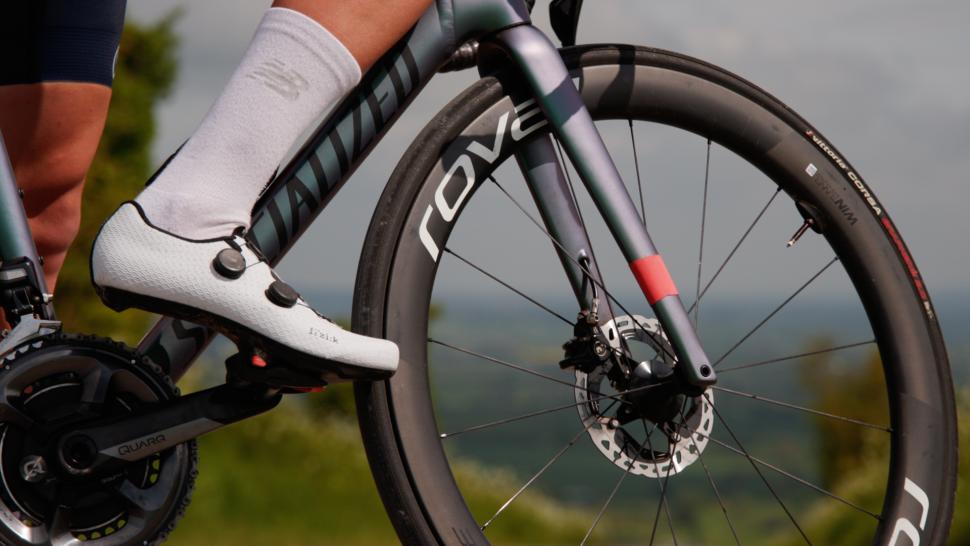
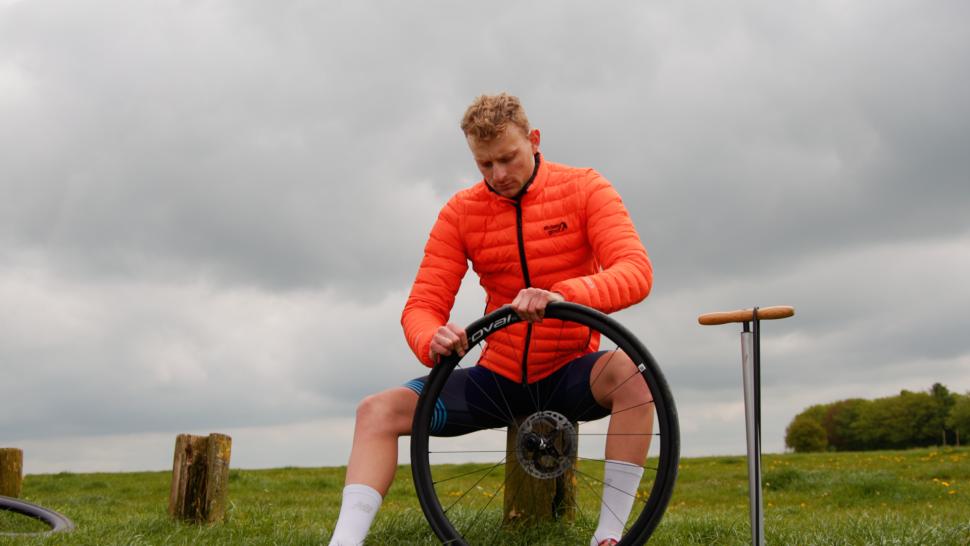



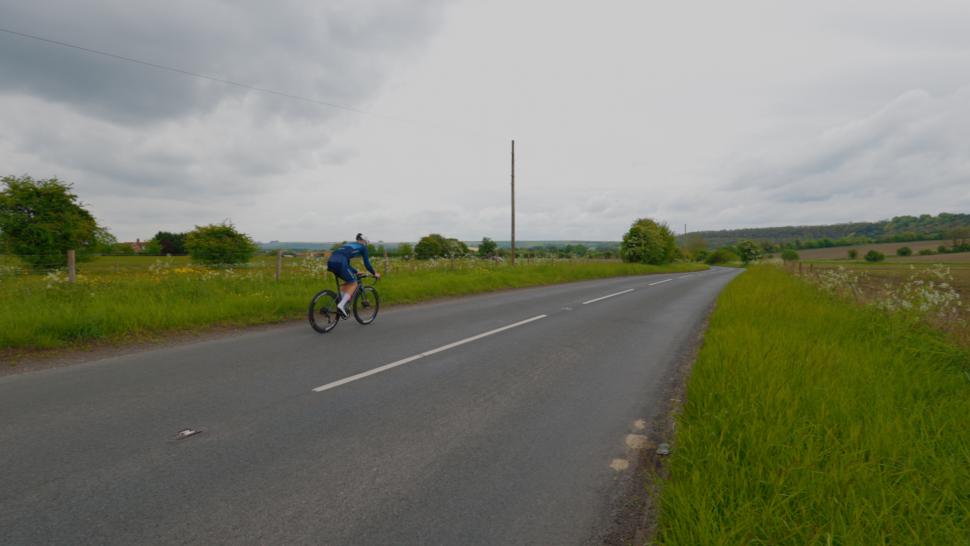

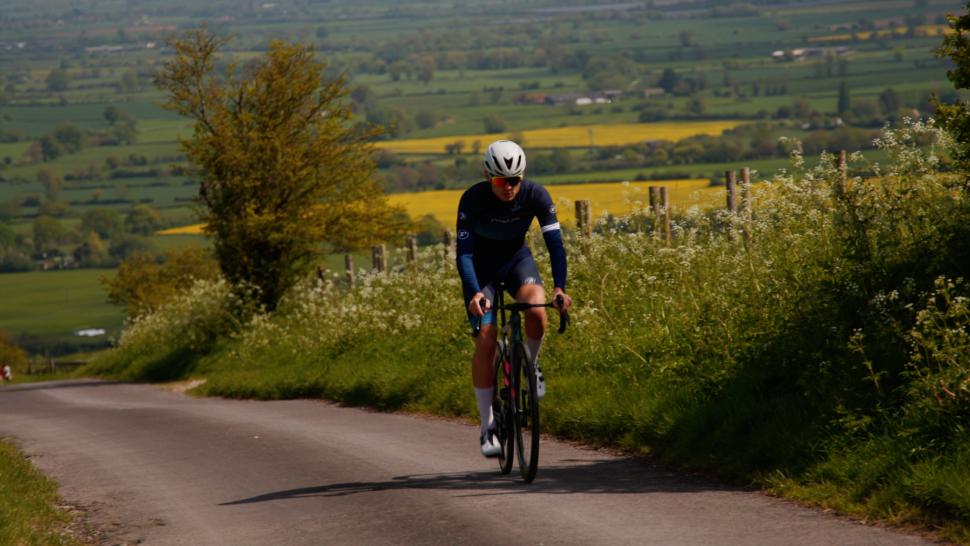


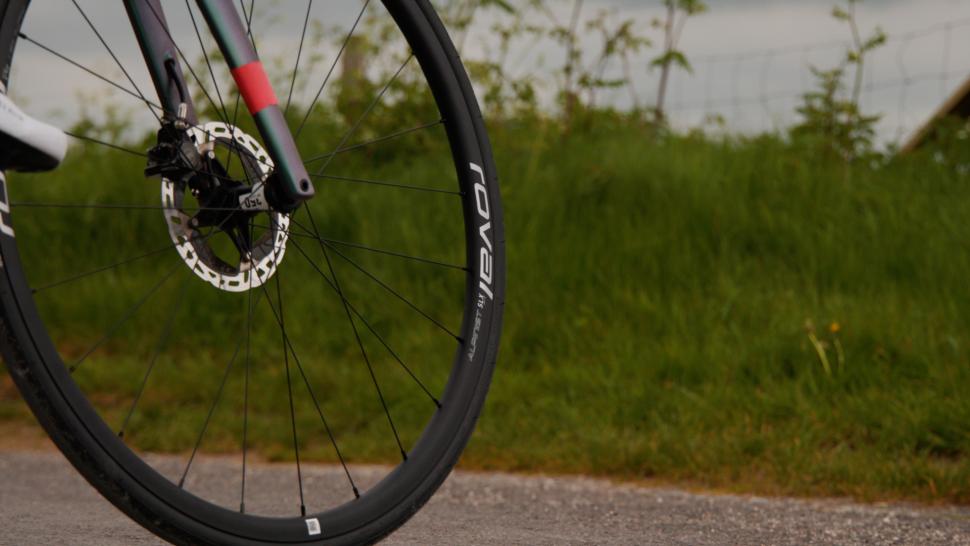

Add new comment
40 comments
a very honest comment, which gives a perspective missing from so many bike (or tyre, inner tube, wheel, etc) reviews, when we see a bike up/downgraded for supposedly being quick/slow.
Yeah but... deep wheels look freakin' awesome!
Agreed!
A very debatable point that. I think they look fugly as hell but each to their own.
What variety of cycling would these tiny gains in average speed from an extra spend of thousands serve? Surely only top class road racing or time trialing. For everyday cyclists, even those riding "for fitness" the miniscule speed differentials are going to be irrelevant, whether riding in a group or alone.
Personally I seek wheels (and other bike parts) that will serve the more mundane requirements of resilience, comfort and efficiency. The efficiency means only that the bike feels good to ride rather than an energy-sapping lump that handles badly whilst providing a series of unwanted roadside opportunities to learn bike-fixing.
Deep section wheels, as the article mentions, can be dangerous on gusty days. They also endanger your bank account. One suspects that, for most buyers, they are more fashionable frock than necessary bike component.
But they make a nice wooosh sound
They certainly do, I've got Roval Rapide CL50s on one of my bikes, it sounds like a TIE Fighter over 30km/h.
my clubmates are often looking around for the tie fighter laser attack when I use my brakes on my carbon rims.
You don't have to spend big to get very good deep aero wheels. I've got 70mm wide section with Hope hubs, Sapin blade spokes. £750 for the set custom built
I think the new generation of deep rims are much better in side winds than they used to be?
My new 58/62s are better than my 50s of twelve years ago anyway.
Pages